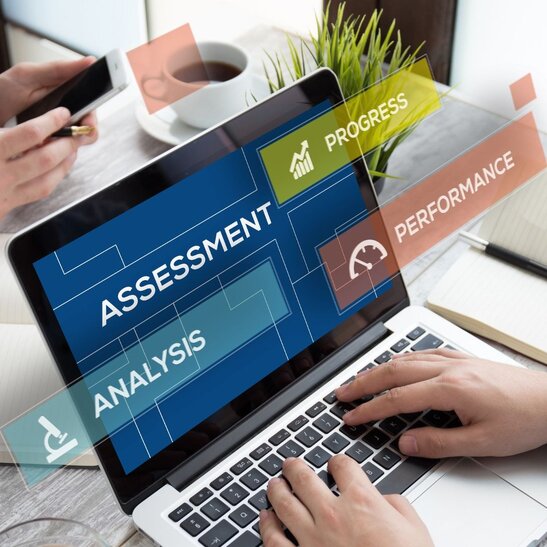Imagine your entire business coming to a halt because of one overlooked system failure. It’s not far-fetched because today’s companies are completely reliant on their IT infrastructure to operate, serve clients, and stay competitive. From the moment a customer fills out a contact form to the backend systems managing inventory and payroll, every part of your business leans on technology.
An IT infrastructure auditis like a full-body scan for your tech environment. It examines everything from servers, networks, software, security, and storage to identify vulnerabilities, inefficiencies, or risks before they spiral into bigger problems.
With more businesses shifting to hybrid models that combine cloud and on-premises solutions, the need for these audits has never been more critical. They offer the insights needed to future-proof systems and build a stronger, more reliable foundation for growth.
What Is an IT Infrastructure Audit?
An IT infrastructure audit is a thorough review of your entire technology environment to see how well it’s supporting your business. Think of it as a health check-up for your systems, one that looks under the hood to catch hidden issues before they cause damage. Rather than focusing on a single area, it evaluates all the major components: servers, data storage, cybersecurity measures, networks, and software.

The main goal is ensuring everything runs smoothly, securely, and in line with current standards. Auditors assess how your systems are performing, whether they’re protected against threats, if they meet compliance requirements, and how reliable they are in day-to-day operations. But it’s not just about the tech.
A well-executed audit connects the dots between your infrastructure and your business objectives, revealing where technology is either helping or holding you back.
Importantly, these audits shouldn’t be a once-in-a-blue-moon activity. As your business and tech evolve, regular audits help you stay ahead, make smarter decisions, and avoid nasty surprises down the track.
Signs You Might Need an Audit
Your systems usually send warning signs before problems spiral out of control. Knowing what to look for can help you take action early.
1. Performance Issues
- Systems crashing without warning
- Slow response times during normal tasks
- Delays in loading applications or files
These slowdowns can lead to wasted time, frustrated staff, and missed opportunities.
2. IT Support Overload
- A steady increase in support tickets
- Recurring issues that never seem to get fixed
- Teams are spending more time putting out fires than focusing on improvements
This often points to underlying faults that need deeper investigation.
3. Outdated or Missed Updates
- Missed patches or upgrades
- Legacy systems are still in use
- No clear update schedule
These gaps can expose systems and make them harder to maintain over time.
4. Security and Data Concerns
- Recent breaches or near-misses
- Lost data or unreliable backups
- Suspicious system behaviour
Ignoring these red flags can lead to serious business risks and legal headaches.
The Cost of Standing Still
Falling behind on technology or relying on old systems builds technical debt. This makes future upgrades harder, more expensive, and riskier. Regular audits help prevent stagnation and keep your systems in shape.
Key Audit Phases Explained
A proper IT audit follows a clear process. Each phase builds on the last to give a full picture of your systems.
A. Planning and Discovery
This phase lays the groundwork for the audit. It focuses on understanding what exists and what matters.
Collected data includes:
- System and network configurations
- Software and hardware inventories
- Security policies and procedures
- Current user access levels
Involvement from key people:
- IT managers
- Operations teams
- Business leaders
These stakeholders help shape the audit so it reflects real business needs. Clear documentation is gathered to avoid confusion later. The scope is then aligned with goals, focusing on areas that support critical services.
B. Scope and Risk Prioritisation
This step helps decide what to check and in what order. It keeps the audit practical and focused.
Critical vs optional checks:
- Systems handling sensitive data
- Tools that affect daily operations
- Older systems that carry more risk
Risk scoring includes:
- How likely something could go wrong
- The damage it could cause
- How easy it is to fix or exploit
This step helps decide how deep the audit should go and how long it might take.
C. Gathering and Analysing Evidence
Now the team starts digging into how your systems are actually running.
Common methods used:
- Reviewing current documents and records
- Running system scans
- Observing processes in action
Two types of testing:
- Compliance checks make sure rules are being followed
- Performance checks see how well systems are doing their job
Tools are used to detect issues like weak passwords or poor response times. The evidence is reviewed based on impact and urgency.
D. Findings and Action Plan
The audit ends with a clear report that explains what was found and what to do next.
A good report will show:
- Problems grouped by risk level
- Shortcomings in systems or policies
- Steps to fix each issue
These actions are listed in order of importance so teams know where to start.
Areas Every Audit Should Cover

A solid audit goes beyond the surface and checks all parts of your technology environment. Each area tells a different story about your systems’ performance and where they might be at risk.
A. Network Infrastructure
Your network is what keeps everything connected. The audit should include:
- Routers, switches, firewalls, VPNs, and bandwidth usage
- Finding slow connections, traffic bottlenecks, or overlooked security gaps
- Reviewing the network layout to see how data flows and if it’s well organised
Topology and segmentation matter because they control how traffic moves and help isolate threats when problems arise.
B. Server and Virtualisation Systems
Servers do the heavy lifting, so their health is vital. Key checks include:
- Load distribution, uptime statistics, and patching history
- Examining hypervisors, virtual machine clusters, and how backups are handled
- Flagging old hardware and poorly managed virtual machines that can create trouble later
C. Storage and Data Systems
Good storage supports performance and recovery. The audit should assess:
- How much capacity is available, and if data is being duplicated
- Whether backup and recovery processes have been tested recently
- How data is managed day to day versus long-term storage practices
D. Software and Platform Services
Software is more than apps; it includes how they’re managed. Look for:
- Signs of unsupported legacy programs
- Clear update schedules and tracking of software versions
- Licence usage and any unauthorised or unmanaged tools in use
E. Security Frameworks
Security touches every system. The audit should review:
- Who has access, and if permissions have grown unchecked
- How well firewalls and antivirus tools are set up
- Password strength rules, use of multi-factor authentication, and endpoint protection setups
Measuring Infrastructure Health: Metrics to Track
Performance indicators act as health markers for your IT systems. They help paint a clear picture of what’s working well and what needs attention.
Key metrics include:
- CPU and memory usage: This shows how much processing power and memory are being used, helping to flag overloaded systems.
- Disk I/O and storage capacity: This tracks how often data is read and written and how much space is left for future use.
- Network latency and throughput: Measures delays in data travel and how much data your network can handle at once.
- Application response times and uptime: Reveals how fast your software responds and how often it’s available when needed.
Monitoring over time is better than relying on a one-off reading. Patterns and changes offer more insight than isolated numbers. These trends support better planning, smarter resource allocation, and early action when problems are on the rise.
Best Practices for a Smooth Audit Process
A smooth audit starts well before the first checklist is ticked. Preparation and clear processes make all the difference.
- Keep asset records accurate: Document all hardware, software, and network components. Outdated records lead to missed issues and wasted time.
- Leverage automation tools: Use scanning software to detect vulnerabilities, track updates, and map your network. It saves time and reveals things manual checks might miss.
- Time it right: Avoid running audits during maintenance periods or major system changes. This ensures results reflect normal operating conditions.
- Encourage collaboration: IT staff and business leaders need to share knowledge. When both sides are aligned, the audit reflects real needs, not just technical details.
- Remove the stigma: Audits should not be seen as blame sessions. Promote them as tools for improvement and resilience.
- Make it routine: Don’t treat audits as one-off tasks. Schedule them at least once a year or after major changes.
- Act on findings: A report means little without action. Assign responsibility for follow-ups and track progress until fixes are complete.
Choosing the Right Partner for the Job
- It’s possible to DIY some audits, but professional oversight is invaluable
- Benefits of third-party perspective: objectivity, wider experience
- Look for auditors familiar with both legacy and modern systems
- Certifications and methodology matter
- Make sure you get a clear, jargon-free report with actionable outcomes
Next Steps: Make Your Tech Work for You
An IT infrastructure audit isn’t just a checklist; it’s a strategic tool that gives you clarity and direction. When you understand how your systems are performing, you gain control over how they support your goals. A well-executed audit doesn’t just fix today’s issues; it helps prepare your business for tomorrow, reducing the risk of disruptions and downtime.
Your approach to managing technology should evolve as technology continues to grow. Regular reviews keep your infrastructure strong, secure, and ready for anything. Treat each audit as a step forward, not just a task to tick off. Your business deserves that level of care.
Stronger Systems Begin with Smart Audits
Your infrastructure won’t raise a red flag until it’s too late. Don’t wait for a system failure or breach to find out where the cracks are. A professional audit is your first step to building smarter, more resilient systems that support your business growth without interruptions.
At Datcom, we specialise in comprehensive IT infrastructure assessments that give you clarity, confidence, and control. Contact us today to discuss how our expert team can help you maintain a technology environment that works for you, not against you.




